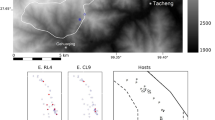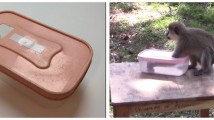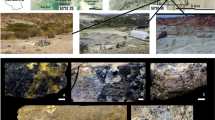Abstract
If it is true that extant primates evolved from an insectivorous ancestor, then primate entomophagy would be a primitive trait. Many taxa, however, have undergone a dietary shift from entomophagy to phytophagy, evolving a specialised gut and dentition and becoming exclusive herbivores. The exclusively herbivorous taxa are the Malagasy families Indriidae and Lepilemuridae, and the Old World Monkey subfamily Colobinae, and among these meat-eating has not been observed except as an anomaly, with the sole exception of the Hanuman langur (Semnopithecus entellus), which feeds on insects seasonally, and a single observation of a nestling bird predated by wild Sichuan snub-nosed monkeys (Rhinopithecus roxellana). Here, we describe the regular capture of warm-blooded animals and the eating of meat by a colobine, the critically endangered Yunnan snub-nosed monkey (Rhinopithecus bieti). This monkey engages in scavenge hunting as a male-biased activity that may, in fact, be related to group structure and spatial spread. In this context, meat-eating can be regarded as an energy/nutrient maximization feeding strategy rather than as a consequence of any special characteristic of meat itself. The finding of meat-eating in forest-dwelling primates might provide new insights into the evolution of dietary habits in early humans.
Similar content being viewed by others
Article PDF
Author information
Authors and Affiliations
Corresponding author
Rights and permissions
About this article
Cite this article
Ren, B., Li, D., Liu, Z. et al. Prey capture and meat-eating by the wild colobus monkey Rhinopithecus bieti in Yunnan, China. Nat Prec (2009). https://doi.org/10.1038/npre.2009.3021.1
Received:
Accepted:
Published:
DOI: https://doi.org/10.1038/npre.2009.3021.1



